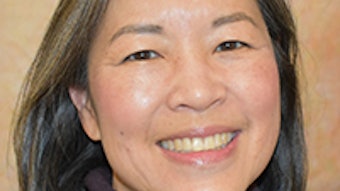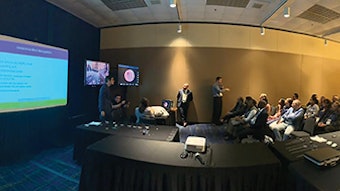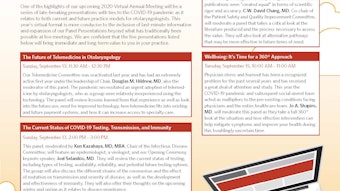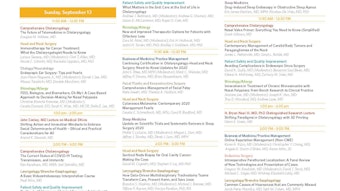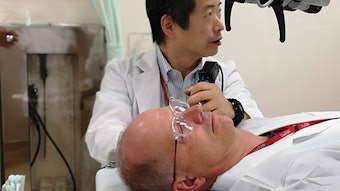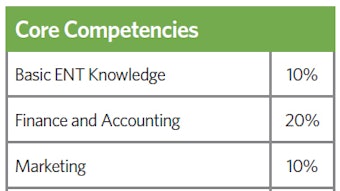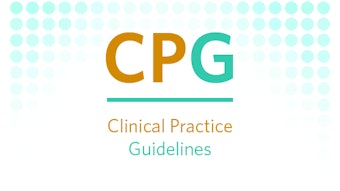Setting Our Course through Collaborative Strategic Planning
The Academy and its Foundation regularly review and adjust priorities of the organization every three-to-five-year period through a multistep strategic planning process. We are beginning preparations for our upcoming strategic planning session to be held in January under the leadership of Carol R. Bradford, MD, who will be our president at the time.
The Academy and its Foundation regularly review and adjust priorities of the organization every three-to-five-year period through a multistep strategic planning process. We are beginning preparations for our upcoming strategic planning session to be held in January under the leadership of Carol R. Bradford, MD, who will be our president at the time. A well-done strategic plan allows an organization to focus its energy and resources on priorities deemed essential to the membership and factors affecting their ability to succeed in moving both their situations and field of endeavor forward. That is particularly true for medical associations where there are frequent and unexpected changes that influence both contemporary and future needs.
 James C. Denneny III, MD
James C. Denneny III, MDAAO-HNS/F EVP/CEO
The AAO-HNS/F has had a robust strategic planning process for over a decade that has served us well in terms of operationalizing priorities of the leadership and members consistently without the year-to-year directional changes seen in many medical associations as elected leadership changes. Recent experience has shown me that not all organizations rely on or value member-led planning events, particularly those whose leadership is dominated by academia. Our last strategic planning exercise was led by Gavin Setzen, MD, three years ago and set the direction that allowed us to expand our Clinical Data Registry, Reg-entSM, to the point we are ready to conduct clinical research when it will be needed the most; adopt our “We Are One” mantra that emphasizes the multiple levels of diversity in otolaryngology; originate ENThealth.org, our patient-centered website; and institute a new state-of-the-art education platform with our flagship product FLEX—while contributing to reserves without raising dues. The upgrade of our technologic capabilities allowed us to seamlessly move to teleworking status during the COVID-19 pandemic and provide the otolaryngology community with the information urgently needed by otolaryngologists worldwide.
Successful planning exercises are critically dependent on identifying the essential stakeholders and selecting engaged representatives for each that can represent key needs of their constituents as well as the organization as a whole. For the Academy’s purpose, that includes spokespersons conveying the interests of all demographic groups, specialty societies within otolaryngology, academic and private practitioners, members of the healthcare delivery team who typically work with otolaryngologists, industry leaders specific to otolaryngology, patient-based organizations, and Academy leadership and staff. Working with an experienced facilitator, leadership and staff will create survey materials and disseminate these to the above-mentioned groups as well as the general membership for their preliminary thoughts. This information will be submitted to the representatives chosen to participate in the virtual strategic planning meeting and who will thoroughly discuss the issues and make initial recommendations. One of the most essential goals of this group will be to review the organizational “mission” and “vision” and either affirm or adapt our current course. Our current vision, “The global leader in optimizing quality ear, nose, and throat patient care” and mission statement, “We help our members achieve excellence and provide the best ear, nose, and throat care through professional and public education, research, and health policy advocacy” have served our members well over the last several years. This Strategic Planning Committee will consist of the representatives of diverse interest groups included in the initial survey. Leadership and staff will then curate and formalize the discussion and recommendation into a preliminary strategic plan.
The entire process and resultant preliminary document will be reviewed and edited first by the Executive Committee of the Boards of Directors and subsequently by the entire Boards of Directors, including invited guests. The final strategic plan will be used to direct future budgeting priorities over the ensuing several years, review current programs and staffing allocation, create new programs, and set the overall direction for the organization. The upcoming five-year period promises to be one of the most disruptive times for healthcare delivery in recent memory. The COVID-19 pandemic has exposed the significant weakness in our public health system as well as the marked disparity in “usable” access affecting large swaths of the population. Following the presidential election in November, there will almost certainly be attempts to modify and improve our current system. There have been several proposals vetted during the campaign, most of which would result in significant change that will set the course for decades to come.
While we are well positioned now for most eventualities, it is critical that we stay ahead of the curve. Input from our members and colleagues throughout the healthcare industry will allow us to formulate a strategic plan that makes that possible.

